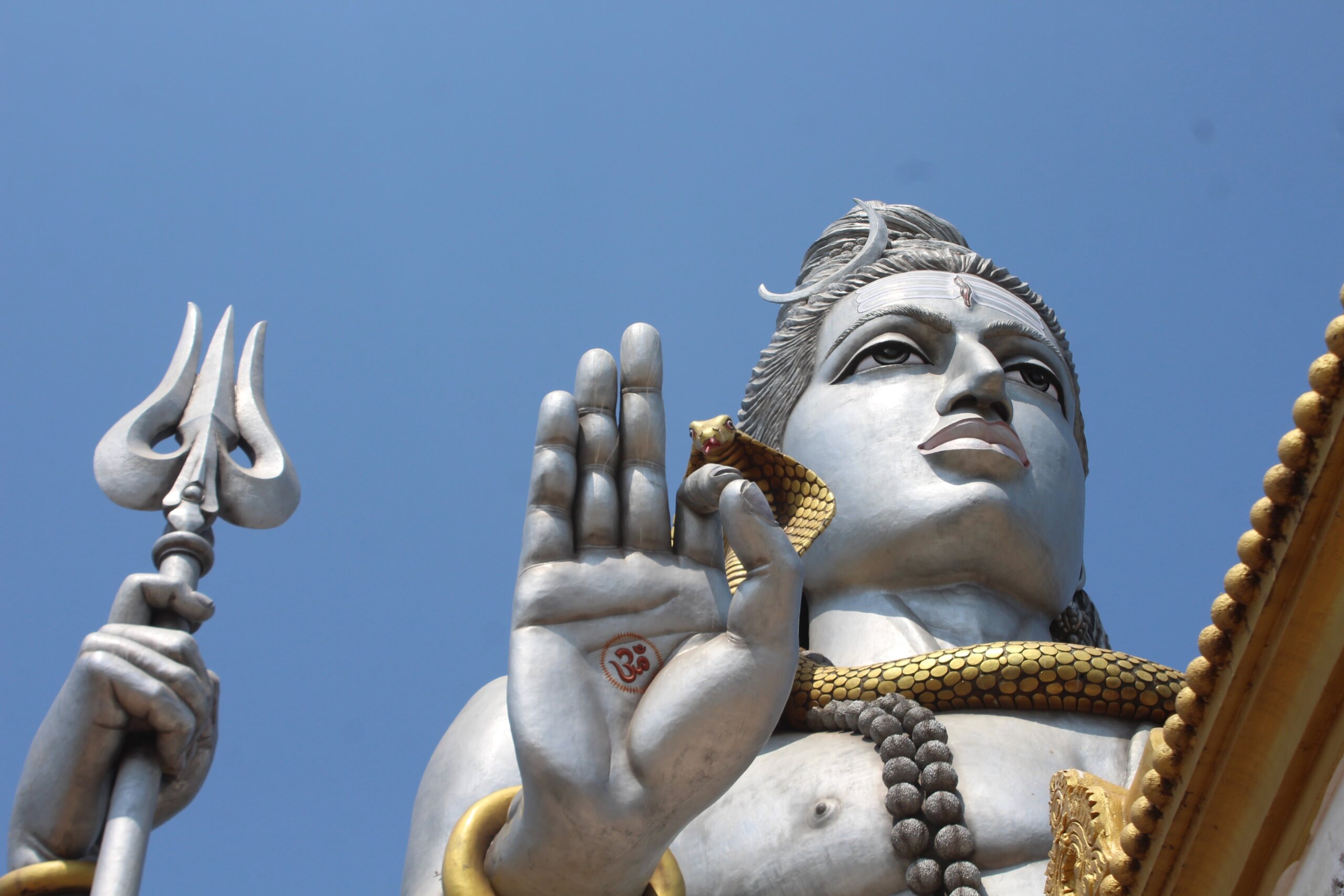The second tallest Shiva statue ever constructed is at Shri Murudeshwar Temple. At 123 feet, it was a breath-taking project that still attracts hundreds of thousands of devotees, tourists, and visitors.
• The statue enjoys prime location status atop the Kanduka Hill, which is surrounded on three sides by undeterred vistas of the Arabian Sea.
• It can be found in Murudeshwar town in Bhatkal, Karnataka.
Lord Shiva holds great meaning for his followers and devotees. He is worshipped as one of the supreme deities who is capable of bestowing ‘Moksha’ – the liberation of a human soul from the cycle of life and death. This freedom from reincarnation is the greatest gift a human soul can attain.
• As a formless and omnipresent entity, Shiva is famously known as the ‘Atman’ or soul of the Universe.
• His basic epithets remind followers of what he is all about: Shambhu (‘Benign’), Shankara (‘Beneficent’), Mahesha (‘Great Lord’), and Mahadeva (‘Great God’).
• Shiva is known to take on multiple forms based on his purpose at any given time. These forms also hold great mystical and symbolic meaning.
• One of his most powerful forms is ‘Ardhanarishvara’, which is when Shiva merges with his consort Goddess Parvati and they two become one entity. One half of him remains male while the other half takes on his consort’s female qualities.
Must Read: Interesting Facts About Lonad Caves/ Khandeshwari Temple
The core spiritual significance of Shiva is not just relegated to Hindu religion but also Indian culture. The long-handled veil he holds in one of his hands directly symbolises ‘Sanatan Dharma’. This is India’s ancient root-culture, the one that evolved our civilisation under the guidance and blessing of various gods and goddesses in the Hindu pantheon, among whom Shiva is one of the most supreme.
Must Read: Karnataka’s Second Tallest Shiva Statue at Ramdurg
The Evergreen Legend of Murudeshwar
The town has a rich and storied heritage going back to the Ramayan period. Here’s a short exploration of its history.
• Ravana plays a key role in it. He was an ardent Shiv-bhakt who prayed to the deity seeking immortality through the ‘atma-linga’.
• The demon’s pursuit of invincibility would have spelled trouble down the line, so the other gods intervened with the intention to keep the atma-linga away from Ravana.
• After Ravana was permitted to claim the atma-linga, Lord Ganesha (one of Shiva’s sons) came up with a clever plan to rid Ravana of the linga. The demon was commanded never to set the linga down until he reached Lanka.
• Taking the guise of Lord Vishnu, Ganesh later intercepted Ravana by blocking out the sun. This made Ravana understand that it was time for his evening prayers.
• The demon handed the atma-linga to Ganesha who at the time had transformed into a little human boy. After that, Ravana went about his ritual.
• Lord Ganesha placed the linga on the ground. This made Ravana furious, because he finally realized that he was tricked into disobeying the one condition he was told not to break.
• He couldn’t move the atma-linga after that, so the demon threw its pieces all over the place. The cloth that wrapped the linga was flung to Mrideshwara, which is today known as Murudeshwar.
These and other magnificent mythos pervade the ancient ‘Sanatan Dharma’ stories found in India’s sacred texts.
Must Read: Dindigad Shiva Mandir Bhiwandi – The Manchester of India
The Best Time to Visit Murudeshwar Temple
The hot and humid coastal-town climate of Murudeshwar stays that way for most of the year. The best time to visit Murudeshwar Temple is from October to March. The holy festival of Shivrathri is held in February, adding to the celebratory significance and symbolism of Lord Shiva worship in the region.
Must Read: Trimbakeshwar Temple: Nashik’s Most Powerful Shiva Temple
The town itself has long served as a popular tourist destination. Both luxury tourists and budget travellers alike will be able to find good accommodations. One of the most unforgettable places to visit in Murudeshwar is the second tallest Shiva statue on Kanduka Hill, of course.
• The statue draws thousands of people from all over the country, as well as those visiting from abroad.
• Take time also to admire the 20-storey Raja Gopura. You can find it well within the temple complex.
• The temple tower boasts a height of 237 feet and comes equipped with a service elevator. It affords you some of the most breath-taking panoramic views, including the wide-open sea and the Lord Shiva statue.
Situated just behind the temple is the Murudeshwara Fort, a relic from the Vijayanagar Empire. It was once renovated by Tipu Sultan.
Must Know: Sri Venkateswara Temple – Attracting Lakhs in Tirupati
More Places to See in Murudeshwar
There are certainly other notable places to visit in Murudeshwar. Let’s explore some of them here.
• Pilgrim locations include sacred places like Kollur (60 km from town) and Udipi (100 km from town). There are direct roads leading to them.
• Just 78 km away spread the beautiful beaches of Om and Kudle. They are in the town of Gokarna.
• You can also enjoy aquatic activities in other Uttara Kannada beaches.
• And of course, there’s Shri Murudeshwar Temple.
Shri Murudeshwar Temple is, in essence, a source of profound ancient meaning and Hindu cultural and religious significance. Take time to admire and learn everything about India’s ‘Sanatan Dharma’ culture and Lord Shiva’s powerful presence at the heart of it.
Must Read: 13 Best Things To Do in Bhubaneswar
